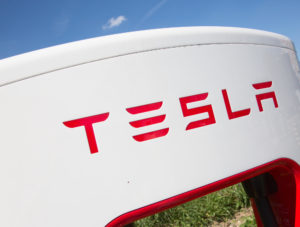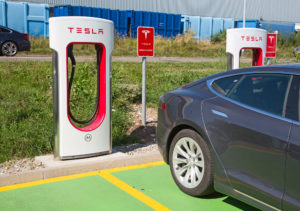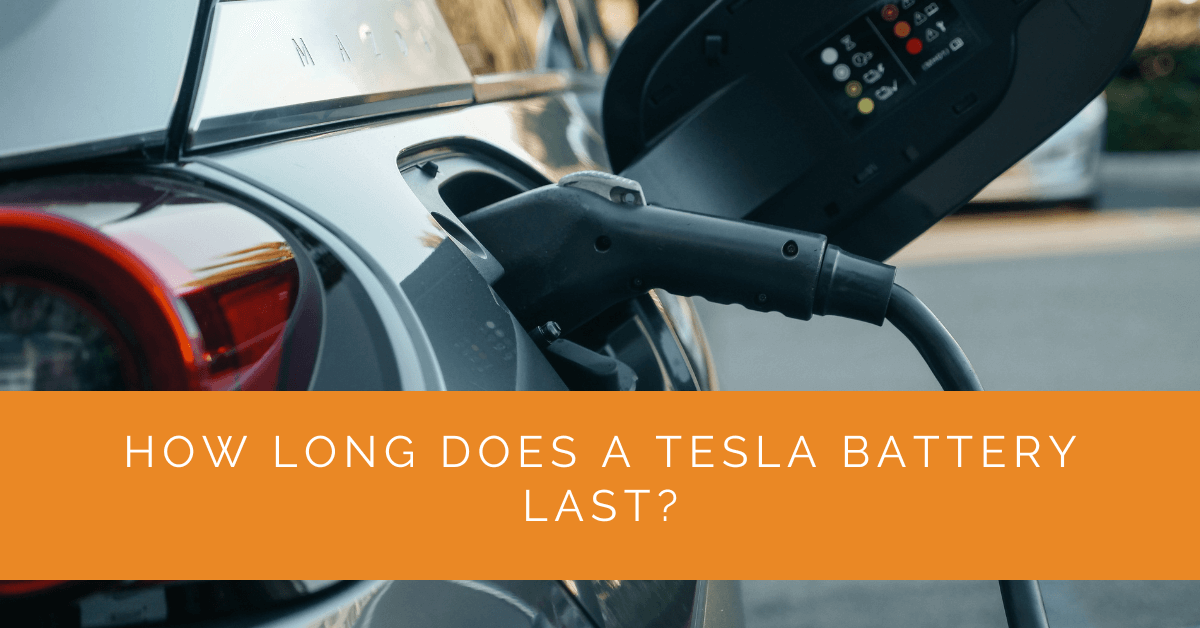As the popularity of electric vehicles continues to rise, the longevity and performance of their batteries become critical considerations for prospective buyers. Among the prominent players in the electric vehicle market, Tesla stands out for its innovative technology and high-quality battery systems. This article delves into the fascinating world of Tesla batteries, exploring their lifespan, factors influencing longevity, warranty coverage, and tips to maximize performance. Whether you’re a current Tesla owner or contemplating purchasing a Tesla vehicle, understanding the intricacies of Tesla battery lifespan is essential for an informed and satisfying ownership experience.
Contents
- 1 Key Takeaways
- 2 Understanding Tesla Batteries
- 3 Factors Affecting Tesla Battery Lifespan
- 4 Tesla Battery Longevity and Warranty
- 5 Extending Tesla Battery Lifespan
- 6 Battery Replacement and Costs
- 7 Expert Insights From Our Solar Panel Installers About Tesla Battery Longevity
- 8 Experience Solar Excellence with Us!
- 9 Conclusion
Key Takeaways
- Tesla batteries are designed to be durable and long-lasting, with factors such as temperature, charging habits, and driving conditions affecting their lifespan.
- Tesla offers comprehensive warranties for their batteries, providing coverage for capacity degradation over a specified period.
- By following Tesla’s recommended practices, owners can optimize battery performance and longevity, while options for battery replacement ensure continued vehicle performance when necessary.
Understanding Tesla Batteries
Tesla batteries are at the heart of their electric vehicles, powering their impressive performance and range. These high-capacity lithium-ion batteries utilize advanced technology to store and deliver energy efficiently. Tesla’s battery packs contain thousands of individual battery cells interconnected to form a large-scale energy storage system.
Tesla’s approach to battery technology involves optimizing energy density, longevity, and safety. They utilize various battery chemistries and cell designs to enhance performance. For example, the Model S and Model X vehicles initially used nickel-cobalt-aluminum (NCA) chemistry, while the Model 3 and Model Y shifted to nickel-manganese-cobalt (NMC) chemistry. These chemistry variations aim to strike a balance between energy density, cost, and lifespan.
The batteries are designed to withstand various operating conditions, including temperature variations, charging and discharging cycles, and high power demands during acceleration. Tesla employs advanced thermal management systems to regulate the battery pack’s temperature, ensuring optimal performance and longevity.
Factors Affecting Tesla Battery Lifespan
Several factors influence the lifespan of Tesla batteries, affecting their capacity retention and overall performance over time. Understanding these factors can help owners make informed decisions to maximize battery longevity.
- Temperature: High temperatures accelerate chemical reactions within the battery, leading to faster degradation. Tesla’s thermal management system helps mitigate temperature-related impacts by cooling or heating the battery pack. Owners are advised to park their vehicles in shaded areas and avoid exposure to extreme temperatures for prolonged periods.
- Charging Habits: Frequent use of fast-charging stations and consistently charging the battery to its maximum capacity (100%) can contribute to increased wear on the battery. Tesla recommends using a regular Level 2 charger for daily charging and reserving fast charging for long trips. Maintaining a charge level between 20% and 80% can help optimize battery health.
- Depth of Discharge: Fully discharging the battery regularly can strain its cells and reduce its lifespan. Shallow discharges and avoiding extremely low battery levels (below 20%) can help preserve battery health. Tesla vehicles incorporate built-in safeguards to prevent full discharge and provide warnings when battery levels are low.
- Driving Conditions and Style: Aggressive driving habits, frequent acceleration, and driving at high speeds can increase power demands on the battery, potentially impacting its longevity. Additionally, driving in extreme weather conditions, such as extreme cold or excessive heat, can affect battery performance and efficiency.

Tesla Battery Longevity and Warranty
Tesla offers comprehensive warranties for their battery packs, providing peace of mind to owners. The specific details of the warranty vary depending on the Tesla model and battery capacity.
The standard warranty for Tesla Model S, Model 3, Model X, and Model Y includes a Basic Vehicle Limited Warranty and a Battery Limited Warranty. The Battery Limited Warranty typically covers several years or miles, whichever comes first. For example, the Model S and Model X may come with an eight-year or 150,000-mile (whichever comes first) warranty on the Long Range battery variant.
It’s important to note that Tesla’s warranty coverage generally includes defects in materials and workmanship and capacity degradation below a specified threshold over the warranty period. The exact terms and conditions of the warranty are outlined in Tesla’s official warranty documentation and can vary based on regional regulations.
Tesla’s commitment to innovation and battery technology advancements allows for ongoing battery longevity and performance improvements. As the electric vehicle industry continues to evolve, Tesla is continuously refining their battery systems to enhance durability and extend battery life.
Extending Tesla Battery Lifespan
While the inherent design and engineering of Tesla batteries ensure durability and longevity, owners can take steps to extend their battery lifespan and optimize performance.
- Battery Management Settings: Tesla vehicles offer customizable settings that allow owners to balance battery longevity and vehicle performance. Options such as “Standard” or “Range” modes provide different charge limits and power delivery settings, enabling owners to tailor their driving experience to their specific needs.
- Optimal Charging Practices: Following Tesla’s recommended charging practices can help extend the life of the battery. This includes avoiding frequent full charges, as well as avoiding consistently letting the battery level drop too low. Utilizing scheduled charging to take advantage of off-peak electricity rates can also help optimize charging efficiency and reduce strain on the battery.
- Regular Software Updates: Tesla regularly releases software updates that include optimizations and improvements to battery management. Staying current with these updates ensures that your vehicle benefits from the latest advancements in battery technology and performance enhancements.
- Climate Control Management: Extreme temperatures can impact battery performance and longevity. Utilizing the pre-conditioning feature to heat or cool the vehicle’s interior while it’s still plugged in can reduce the strain on the battery when attempting to reach desired cabin temperatures.
- Storage Considerations: If you plan to store your Tesla for an extended period, it’s important to follow Tesla’s guidelines for battery storage. This may include keeping the battery level at a recommended state of charge, ensuring the vehicle is plugged in to maintain optimal battery health, and storing the vehicle in a cool and dry location.
By adopting these practices and adhering to Tesla’s recommendations, owners can maximize the lifespan of their Tesla batteries, ensuring optimal performance and range throughout the vehicle’s life.

Battery Replacement and Costs
Over time, replacing the battery in a Tesla vehicle may become necessary. The need for battery replacement can be influenced by factors such as usage patterns, driving habits, and battery degradation. Tesla offers battery replacement options to ensure continued performance for their vehicles.
- Battery Replacement Process: Tesla’s service centers are equipped to handle the process when a battery replacement is required. Trained technicians will assess the battery’s condition and replace it with a new or refurbished battery pack, depending on the specific circumstances. The process typically involves removing the existing battery pack and installing the replacement unit.
- Battery Replacement Cost Considerations: The battery replacement cost can vary depending on the model, battery capacity, and applicable warranties. Tesla provides transparent battery replacement pricing; owners can contact their local service centers or refer to Tesla’s official website for specific pricing information. It’s important to note that battery replacement costs may decrease over time as battery technology advances and economies of scale are realized.
- Battery Warranty and Degradation: Tesla’s battery warranties cover capacity degradation below a specified threshold over the warranty period. Understanding the warranty terms and conditions is essential when considering battery replacement costs. Tesla’s warranty documentation provides detailed information on coverage, including the specific thresholds and durations applicable to different models and battery capacities.
Tesla’s commitment to battery technology innovation, continuous improvements, and its dedication to customer satisfaction contribute to a positive ownership experience. With proper care, adherence to recommended practices, and the availability of battery replacement options, Tesla owners can enjoy the longevity and performance of their electric vehicles for many years to come.
Expert Insights From Our Solar Panel Installers About Tesla Battery Longevity
As experienced solar installers, we understand the impact of temperature on battery life. Just like solar batteries, Tesla’s lithium-ion batteries perform best in moderate temperatures. Extreme heat can accelerate degradation, while cold can reduce efficiency. Tesla’s advanced thermal management system is crucial in mitigating these effects, similar to the systems we use in solar installations to ensure longevity and optimal performance.
Senior Solar Technician
Proper charging habits are essential for maximizing the lifespan of any battery system, whether it’s for solar storage or electric vehicles. Consistently charging your Tesla battery to 100% or frequently using fast chargers can stress the battery over time. In our solar installations, we advise customers to maintain their batteries within a mid-range state of charge for everyday use, which aligns perfectly with Tesla’s recommendation to keep the charge between 20% and 80% for optimal health.
Lead Installer
Regular maintenance and updates are key to the longevity of both solar and EV batteries. Tesla’s over-the-air software updates can enhance battery performance and longevity by optimizing management algorithms. Similarly, we recommend regular check-ups and firmware updates for solar battery systems to ensure they operate at peak efficiency and last as long as possible.
Solar Energy Consultant
Experience Solar Excellence with Us!
Trust in Solar Panels Network USA, where our seasoned experts deliver top-quality solar solutions for homes and businesses nationwide. With a legacy of countless successful installations and a commitment to sustainable energy, we’re your reliable partner in the solar journey. Ready for a brighter, eco-friendly future? Call us now at (855) 427-0058 and harness the power of the sun!
Conclusion
The lifespan and performance of Tesla batteries are crucial for both current owners and prospective buyers. Understanding the factors influencing battery longevity, such as temperature, charging habits, and driving conditions, empowers owners to make informed decisions to maximize their battery’s lifespan. Tesla’s comprehensive battery warranties provide additional assurance and coverage for capacity degradation over a specified period, further enhancing the ownership experience.
Owners can optimize battery performance and extend its lifespan by adhering to Tesla’s recommended practices, including optimal charging habits, software updates, and climate control management. Additionally, Tesla’s commitment to ongoing advancements in battery technology ensures that its vehicles deliver exceptional range, efficiency, and durability.
As the electric vehicle industry evolves, Tesla remains at the forefront of battery innovation, constantly refining their systems to provide longer-lasting and higher-performing batteries. With options for battery replacement and transparent pricing, Tesla owners can confidently anticipate their vehicles’ longevity and continued performance for years to come. Embracing the benefits of sustainable transportation through Tesla’s advanced battery technology offers a greener future and a rewarding and reliable driving experience.
About the Author
Solar Panels Network USA stands at the forefront of solar energy solutions, driven by a team of seasoned solar engineers and energy consultants. With over decades of experience in delivering high-quality solar installations and maintenance, we are committed to promoting sustainable energy through customer-centric, tailored solutions. Our articles reflect this commitment, crafted collaboratively by experts to provide accurate, up-to-date insights into solar technology, ensuring our readers are well-informed and empowered in their solar energy decisions.

